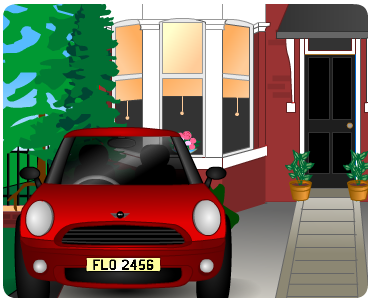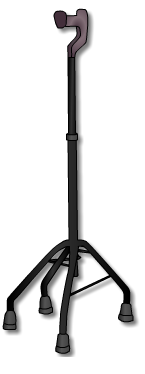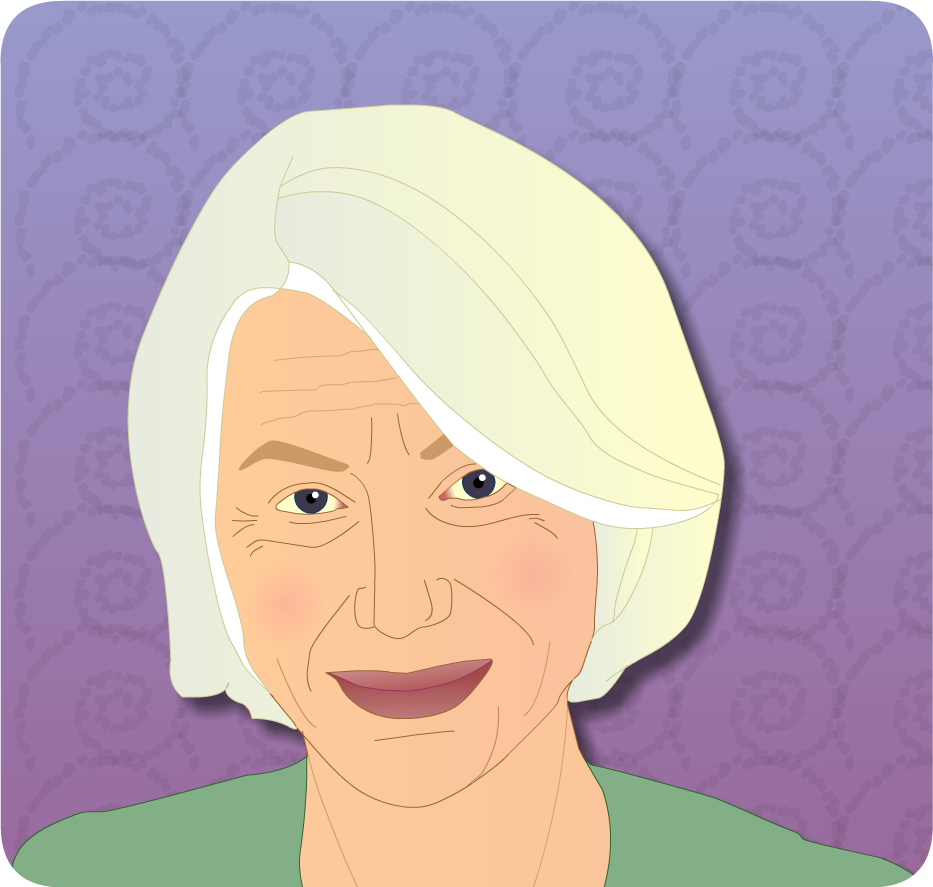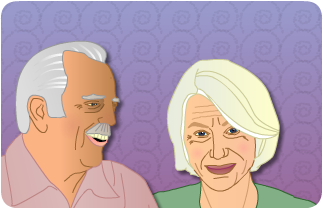The main areas of concern for Flora are:
- Physical – left upper and lower limb weakness, altered sensation, sensory inattention, reduced proprioception & increased muscle tone
- Cognition & perception – executive problems and poor insight into her limitations; mild left sided visual inattention.
Flora’s ability to drive might be affected in the following way as a result of her left-sided inattention:
N.B. Someone with a left hemianopia may have a similar experience, although their problem is visual rather than perceptual. Flora does not have this problem.
Although a hemianopia or quadrantanopia is a DVLA listed medical legal bar to driving and must be declared, DVLA may be able to reconsider its practical effect on driving when the individual is one year post stroke, has medical support that the deficit is static i.e. non-progressive, and they have documented medical support in relation to their ability to compensate for this in everyday life. In this case DVLA may consider the individual as an ‘exceptional case’ and can choose to refer them to Specialist Driving Assessment Service for assessment. Clinically apparent visual inattention is also a DVLA listed medical legal bar to driving. See DVLA guidelines for further information.
Following a stroke an individual may have impairments that impact on their ability to control a vehicle.

Four weeks following her stroke, Flora remains in hospital. She has mentioned to several members of the multidisciplinary team (MDT) how eager she is to return home and to resume driving her new automatic Mini Cooper which she purchased recently. She sees no barrier to this.
Flora’s family ask what will happen regarding her returning to driving. Consider what you should advise.
A persisting visual field deficit or a clinically apparent visual inattention are legal medical bars to driving and must be declared to DVLA. Such deficits may however improve with time. These factors are vitally important for safe driving and ideally a return to driving should not be considered until the patients post stroke recovery begins to plateau.
Driving may resume after one month if there has been a satisfactory clinical recovery.
 Flora was at home when she collapsed. She had an acute onset of left-sided weakness in her upper and lower limbs with some facial weakness. She also appeared to have left-sided visuo-spatial neglect.
Flora was at home when she collapsed. She had an acute onset of left-sided weakness in her upper and lower limbs with some facial weakness. She also appeared to have left-sided visuo-spatial neglect.
She was admitted to hospital where she remains an inpatient. She is beginning to make progress following her stroke and is now mobilising with a quad stick and supervision.
She still has significant impairment including:
- left upper limb weakness
- mild left visual inattention. Unless this recovers to the extent that it is not clinically apparent Flora will not be able to resume driving
- cognitive issues which include executive problems. She has poor insight into the impact her impairments will have on her ability to return to daily activities

 Flora Forbes is a 63-year old married woman. She lives with her 75-year old husband. He has progressive Parkinson’s disease.
Flora Forbes is a 63-year old married woman. She lives with her 75-year old husband. He has progressive Parkinson’s disease.
They have recently celebrated their ruby wedding anniversary and live in a rural area with poor transport options.
- Prior to her stroke, Flora was a very active lady who was heavily involved in her local community; Church; SWRI (Scottish Woman’s Rural Institute).
- Flora looks after her 3 grandchildren after school and during the school holidays.
- Prior to her stroke she was fully independent with daily activities and was a driver. She has been having to support her husband with tasks as his condition progresses.
- Approximately 50% of individuals experience sexual dysfunction following stroke.
- Despite the high incidence of sexual dysfunction following stroke, sexuality is not commonly addressed as part of stroke rehabilitation.
- Sexual difficulties encompass more than just the physical act of sexual intercourse.
- There is a complex interplay between physical and psychosocial factors that can impact on sexual functioning after stroke.
- There are tools available, such as the PLISSIT model, that can help health professionals address sexuality.
- Health professionals should be aware that they have a responsibility in addressing sexuality but should also be aware of their professional limitations.
- To date, the findings of a Cochrane Review (2020) of the literature reports that there is insufficient evidence regarding the efficacy of post stroke rehabilitation interventions and highlights the need for further high quality research in this important area of stroke rehabilitation.
Reference: McDermott & Rochette (2020)

This level of intervention is only required for a very small number of patients. At this stage of the PLISSIT MODEL further specialist assessment and intervention may be sought through referral to a relationship counsellor or specialist sex therapist.
The nurse recommends that Les speaks to his GP about the problems he is having achieving an erection. In the meantime she suggests that Les and Jean try adjusting the position in which they have sex, so that the arm is protected, and/or using pillows to provide support for the arm. The occupational therapist and physiotherapist may also be able to recommend any equipment to support safe and comfortable positioning during sexual activity. The nurse adds that if these strategies do not help, Les should discuss further options such as medication with his GP at the arranged appointment.

 Flora was at home when she collapsed. She had an acute onset of left-sided weakness in her upper and lower limbs with some facial weakness. She also appeared to have left-sided visuo-spatial neglect.
Flora was at home when she collapsed. She had an acute onset of left-sided weakness in her upper and lower limbs with some facial weakness. She also appeared to have left-sided visuo-spatial neglect.
 Flora Forbes is a 63-year old married woman. She lives with her 75-year old husband. He has progressive Parkinson’s disease.
Flora Forbes is a 63-year old married woman. She lives with her 75-year old husband. He has progressive Parkinson’s disease.



